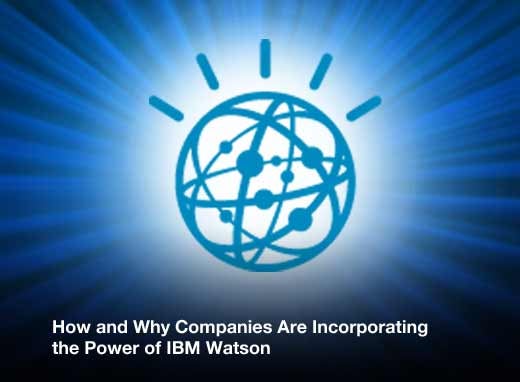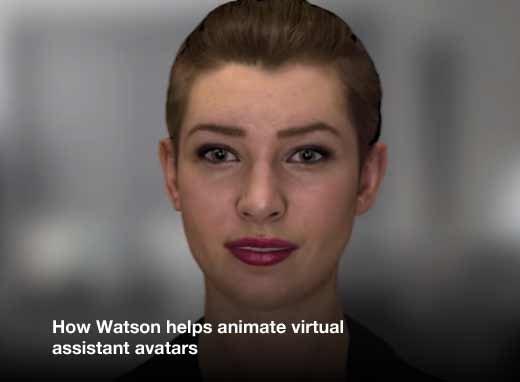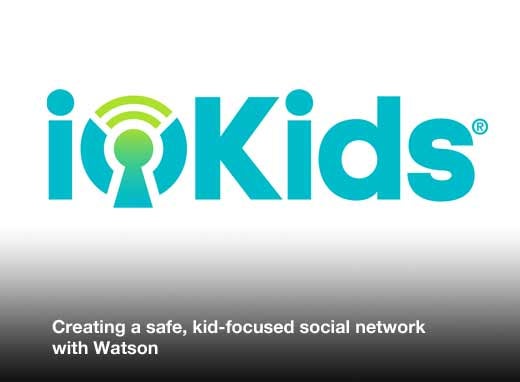IBM Watson was introduced to the average person years ago when the cognitive computing platform went up against game show Jeopardy’s most famous contestant, Ken Jennings – and won big.
However, IBM Watson is much more than a trivia buff. Today, according to IBM, Watson represents a new era in computing called cognitive computing, where systems understand the world in a way more similar to humans: through senses, learning and experience. Watson continuously learns from previous interactions, gaining in value and knowledge over time. With the help of Watson, organizations are harnessing the power of cognitive computing to transform industries, help professionals do their jobs better, and solve important challenges.
“Innovation in natural language processing and artificial intelligence is creating opportunities for consumer marketers to better identify and communicate with their customers,” said Andy O’Dell, chief strategy officer at Clutch, a marketing technology company. “In retail, IBM Watson has the capabilities to transform how marketers understand and relate to these shoppers. Watson, for example, can take a sample of a consumer’s social media post over time and use this to predict the customer’s age, education level, and even their emotional characteristics. It can assess a customer’s unique personality across 50 distinct facets of personality like extroversion, risk aversion or agreeableness just based on these posts.”
Here are other ways IBM Watson is being used across different companies and industries.
How and Why Companies Are Incorporating the Power of IBM Watson
Watson continuously learns from previous interactions, gaining in value and knowledge over time. Learn how companies are harnessing that AI power to create and improve products and services.
How Watson improves enterprise resource planning (ERP) software
Today, ERP systems generate tons of data. According to Joe Scioscia, vice president of sales for ERP software provider VAI, Watson analytics can help customers uncover new patterns and trends in their data that they could not easily see through conventional reporting. By visually presenting data and allowing users to interact with data conversationally to get answers, it can help drive business decisions, he said.
“Watson can streamline business processes by predicting future outcomes based on historical patterns,” Scioscia added. “Companies can then adjust their processes to improve productivity, increase sales and lower costs.”
How Watson assists insurance underwriters
At Erie Insurance, management realized that new and junior underwriters often have a lot of questions when drafting a claim. They turn to senior underwriters for advice, but these interruptions slow down productivity for everyone. So Erie Insurance built an application using the Mendix low-code platform that utilizes Watson smart technology.
“The app is used so that junior underwriters can enter questions and get information back. The benefit of using Watson is they use natural language processing and can continue to improve and add to the database of information over time,” said Sarah Salbu, communications & social media manager with Mendix.
How Watson helps animate virtual assistant avatars
Soul Machines is a developer of intelligent, emotionally responsive avatars that augment and enrich the user experience for artificial intelligence (AI) platforms. IBM Watson provides the Cognitive AI platform that allows users to directly interact with its emotionally responsive avatars. Together, they developed a virtual assistant for Australia’s National Disability Insurance Agency.
Named Nadia, the virtual assistant is able to speak, write and chat online with people with disabilities. Academy Award winner and CEO of Soul Machines, Mark Sagar and his team, developed the emotionally intelligent (EI) avatar technology that provides Nadia with her human-like face and emotionally responsive expressions. As the Soul Machines team explained, “Nadia’s natural language capability is powered by IBM Watson’s Conversation system and is trained by capturing question variants and linking them to an intent. Combining a human face and voice with cognitive and emotional intelligence, in a system co-designed by the disability community, is a world first – and has resulted in the unique language and personality model that people with disability want and need.”
Developing new TV show characters with Watson
Fred Graver, an Emmy-award winning TV industry veteran and former global head of TV creative at Twitter, is using IBM Watson to help develop a character for a new show pilot. Approximately 850,000 public Twitter profiles were analyzed with the IBM Watson Personality Insights and Natural Language Understanding APIs through Audiense, a marketing insights and engagement platform. With this technology, Graver created an original character for the pilot that should resonate with his target audience, based on the audience preferences and personality traits indicated in social media profiles.
How Watson Helps Customers order the perfect flower arrangement
1-800-Flowers launched GWYN, (Gifts When You Need) and an AI-powered gift concierge. Using Watson’s conversational capabilities, GWYN can interact with online customers using natural language. GWYN is designed to interpret customer’s questions, and then ask a number of qualifying questions about the occasion, sentiment and who the gift is for to ensure she shares the appropriate, tailored gift suggestion with each customer.
Creating a safe, kid-focused social network with Watson
Kids like social media as much as adults, but few truly kid-friendly platforms are available. Watson is involved in making social media a safer place for youngsters. Dynepic, a social networking platform especially for children, is using Watson to connect kids from around the globe. Called the Internet of Kids, the social platform enables children 13 and under to interact and connect digitally, allowing parents to manage those interactions. The platform relies on Watson’s Text to Speech API to help young kids communicate verbally with the app as they’re developing their reading and writing skills.









